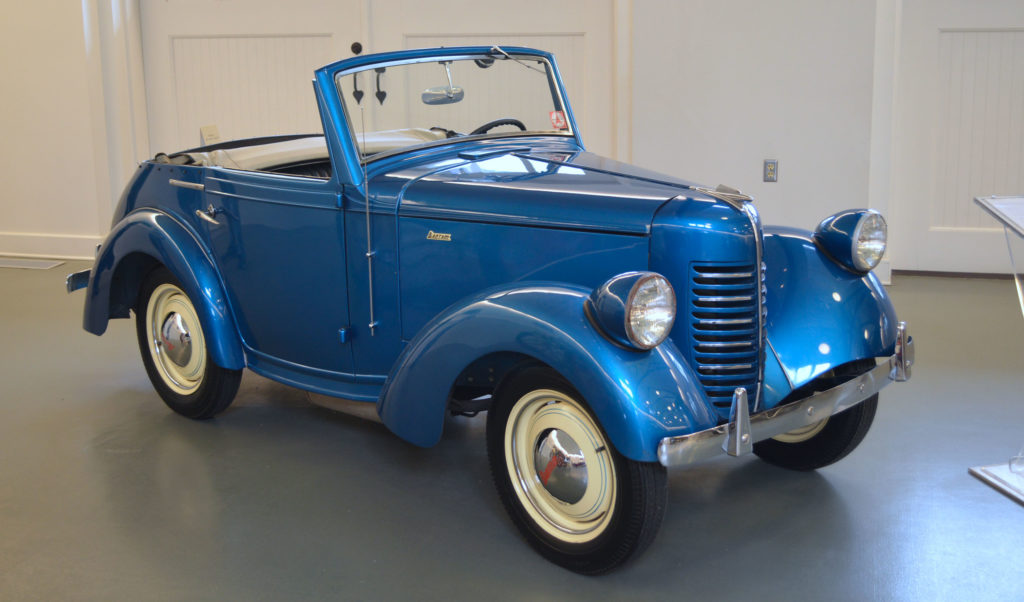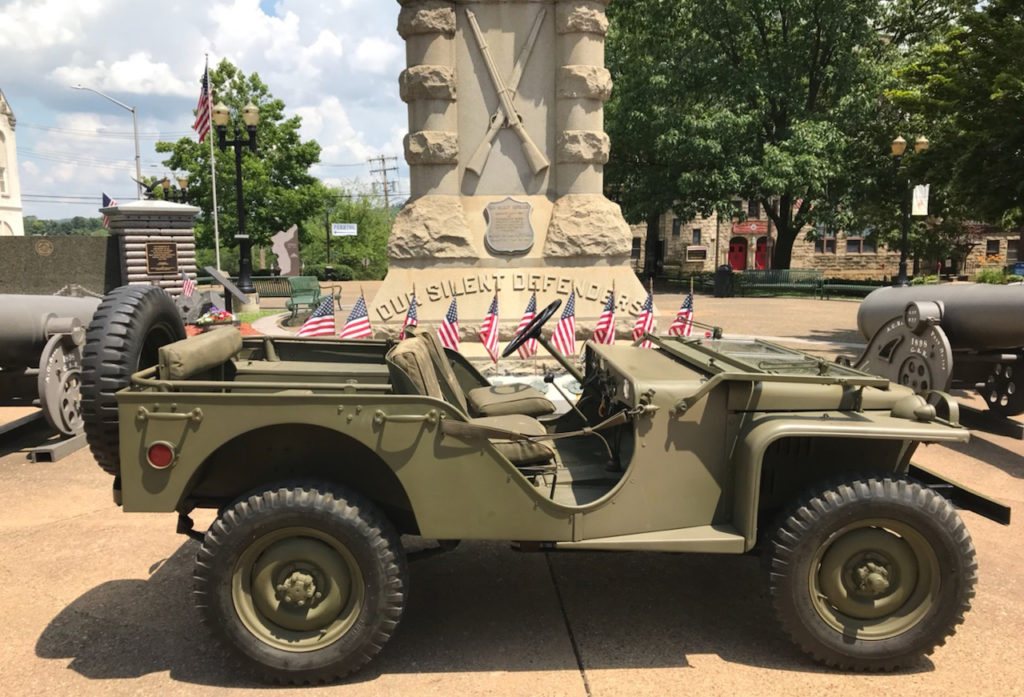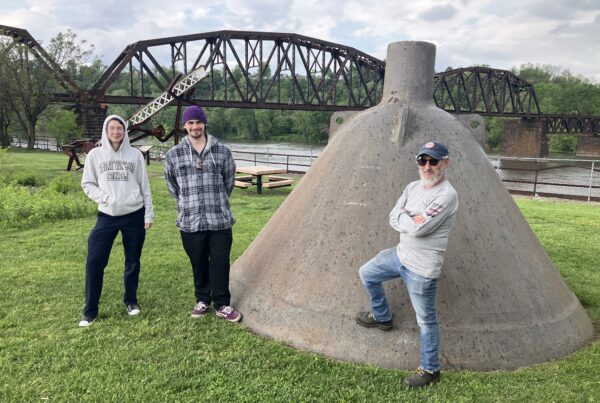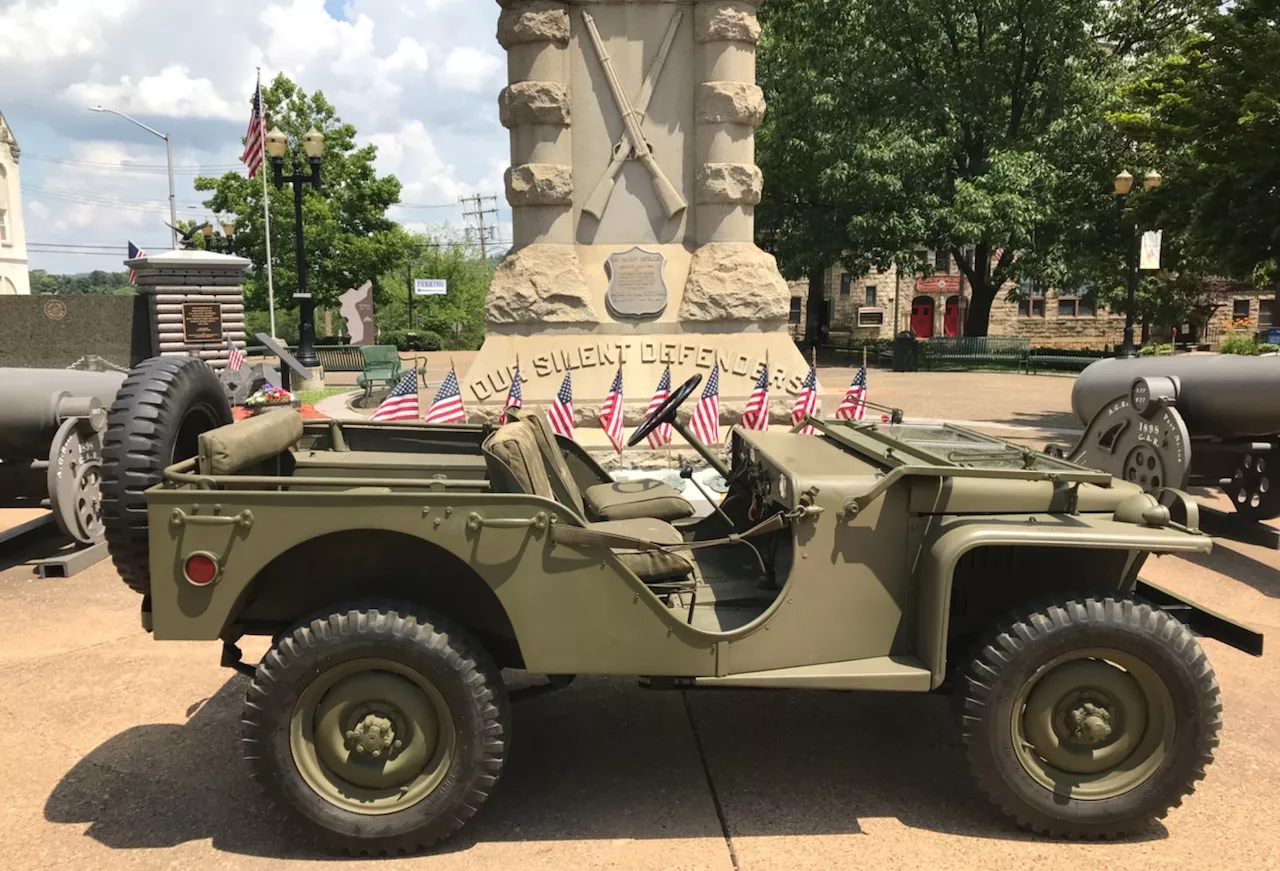
By Brianna Horan, Manager of Tourism & Visitor Experience
 Exploring the Rivers of Steel National Heritage Area – Automobiles and Roadways!
Exploring the Rivers of Steel National Heritage Area – Automobiles and Roadways!
Transportation keeps us moving, so it’s a fitting theme to embrace on your next road trip through the Rivers of Steel National Heritage Area! The hilly terrain crisscrossed by rivers and waterways that defines the region—and the need to move people, raw materials and manufactured products across it—has shaped a history rampant with innovations that pushed transportation to new speeds, modes, and destinations. Local residents contributed an immense amount of labor and incredible ingenuity that were foundational to these advances.
In the coming weeks, we’ll be sharing transportation-focused itineraries filled with museums, attractions, collections, and sites that show getting there is more than half of the fun when traveling. It’s also the very means of human connection, opening up throughways between different people and their cultures. The upcoming itineraries will each feature a different way to move: Automobiles and Roadways, Trains & Trolleys, Boats & Bridges, Bicycles, and Aircraft.
Spotlight On: The Liberty Tubes
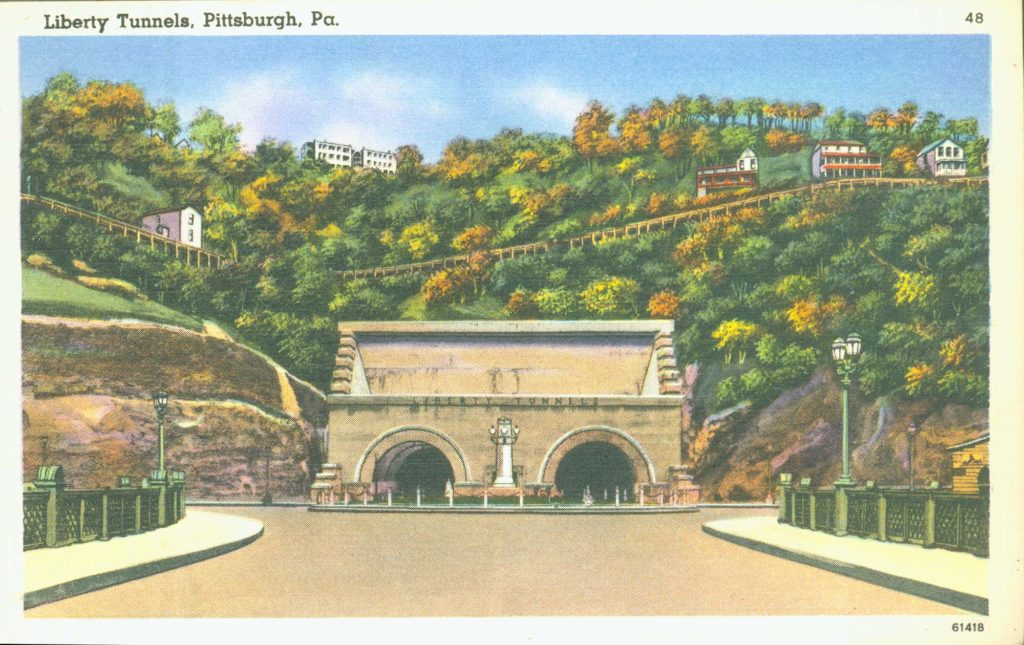
When they opened in 1923, the Liberty Tunnels were the longest automobile tunnels in the world, boring through Mt. Washington to connect downtown with communities in the South Hills. Such a feat made them a landmark worthy of being pictured on postcards.
Over, under, around, across, through… a description of the ways that Pittsburgh-area roadways conquer geography can end up sounding a lot like a grammar lesson on prepositions! A terrain defined by hills, ravines, waterways–and winding roads to cover it all—really does make getting there half the fun around here. It has also led to innovative infrastructure to get drivers from point “A” to point “B” during the rise of the automobile in the early 20th century.
Take the Liberty Tunnels, which opened after four years of construction that removed about 400,000 cubic yards of rock from Mount Washington, building what were the longest automobile tunnels in the world when they opened in 1923. Pittsburgh Quarterly reports that the dig involved an average of 200 men per day, and lasted for 388 working days. The fact that motorists shared the road with horse-drawn wagons traveling between downtown and the South Hills in the 5,889-foot-long tubes until 1932–with a brief re-appearance during World War II when gasoline was rationed–demonstrates the changing times that the tunnels were built for.
While tunnel constructions was not new, designing longer tunnels for gasoline-powered vehicles was. The Liberty Tunnels engineers needed to accommodate a novel side effect: carbon monoxide emissions. The New York, New Jersey Hudson River Tunnel Authority looked to Pittsburgh’s U.S. Bureau of Mines to help them determine the potency of exhaust and the physics of airflow through the tunnels. The findings, as Tom Imerito writes in Pittsburgh Quarterly, were used to design the ventilation system not only for the Liberty Tunnels which were already under construction, but also a proposed project in Boston and a number of tunnels being planned in New York–including the Holland Tunnel, which would dethrone the Liberty Tubes as the longest automobile tunnels when they opened in 1927.
The ventilation system took longer to complete than the Liberty Tunnels did, and with the public eagerly awaiting the new throughway, the decision was made to open them to traffic without a functioning fan and vent system. Initially, natural drafts worked as hoped until the first traffic jam occurred eight months later. When the Pittsburgh Street Railway Company went on strike, it sent South Hills commuters into their cars–a record 649 entered the inbound tube between 7:30 and 8 a.m. on May 10, 2924. This surge in rush hour traffic brought cars to an idling standstill. Soon drivers were gasping for air and abandoning their still-running vehicles as they ran to the emergency exits. Thirty-three people were hospitalized for carbon monoxide inhalation, and when the tunnels re-opened that afternoon traffic was limited to six vehicles entering per minute until the ventilation system was completed in 1925, making the Liberty Tubes the first artificially-ventilated tunnels. WESA reporter Margaret J. Krauss takes listeners inside the Liberty Tunnel Fan House to experience the technology that keeps the tunnels safe today.
Perched atop Mount Washington on Secane Avenue, the fan house is the output for the 200-feet-high ventilation shafts pull exhaust out of the tunnels– it spews the fumes out through four tall stacks that are easy to spot atop the bluff. In his comprehensive survey of the city’s tunnels for Pittsburgh Magazine, Joe Grata reveals that there are eight fans, 12 feet in diameter and powered by 250-horsepower motors, that maintain a 15-mph airflow through the tunnels. Today approximately 65,000 vehicles pass through the tunnel each day.
Automobiles and Roadways to Visit
As a fitting companion to guest author and The Frick Pittsburgh Assistant Curator Kim Cady’s recent article, Pittsburgh and the Automobile Industry in the Early 20th Century, we’ve assembled an auto-themed itinerary that will take you through Allegheny, Beaver, and Butler counties—starting at the Frick’s Car and Carriage Museum, of course!
If you’re planning to hit the road on these itineraries during the global pandemic, please be mindful of the health and safety guidelines in place from the Commonwealth of Pennsylvania and the Centers for Disease Control and Prevention. Be sure to contact the sites, restaurants and attractions directly to confirm their operating status and the safety protocols they have in place before you go. We encourage you to bookmark these itineraries as travel inspiration to return to when things are less uncertain.
American Austin Car Company, Butler, PA. American Bantam Model 65 Convertible Coupe, 1940. Frick Art & Historical Center, 1999.1.14. Gift of G. Whitney Snyder.
The Frick Pittsburgh
7227 Reynolds St., Pittsburgh, PA 15208 | 412-371-0600 | thefrickpittsburgh.org
The Frick’s Car and Carriage Museum traces the transition in American life at the turn of the 20th century, as horse-drawn carriages phased out in favor of “horseless carriages.” Housed on the grounds of industrialist Henry Clay Frick’s Gilded Age mansion, the Car and Carriage Museum displays a large number of the Frick family’s carriages and automobiles, and also captures Pittsburgh’s role in the development of the automobile industry.
Automobile Row
Baum Boulevard, East Liberty and North Oakland, Pittsburgh
You won’t be far from the storied Automobile Row when you’re at The Frick’s Car and Carriage Museum. Take a stroll down Baum Boulevard in the East End of Pittsburgh to see the remains of repurposed former auto dealerships, manufacturers, and even the site where America’s first purposely-built, drive-in gas service station once stood at the corner of Baum Blvd. and St. Clair St. (Gulf Oil opened it in 1913, and the eye-catching pagoda architecture also offered free air and water—in addition to the first commercial road maps in the United States. Click here see a photo and learn more from the American Oil & Gas Historical Society.) Read up on Pittsburgh’s important contributions to the automobile industry in the early 20th century in a guest blog post from Kim Cady, The Frick Pittsburgh’s Assistant Curator of the Car and Carriage Museum before you go. You won’t be able to miss the turquoise dome of Motor Square Garden, which opened as a public market in 1900 and later hosted frequent car shows. It was also a Cadillac and then Ford dealership throughout the years; today it’s owned by West Penn AAA. In the past, Pittsburgh History & Landmarks Foundation has offered occasional public walking tours of Automobile Row.
Superior Motors
1211 Braddock Ave., Braddock, PA 15104 | 412-271-1022
This Braddock restaurant is housed in what was once one of the first indoor car dealerships in the country. The open kitchen looks into the former Chevy showroom, which has been converted into a main dining room of exposed brick and concrete. A meal at Chef Kevin Sousa’s Superior Motors is a dining experience in overdrive—Time magazine named it one of the “World’s Greatest Places” in 2018, and Anthony Bourdain savored a meal there during Parts Unknown’s exploration of Pittsburgh.
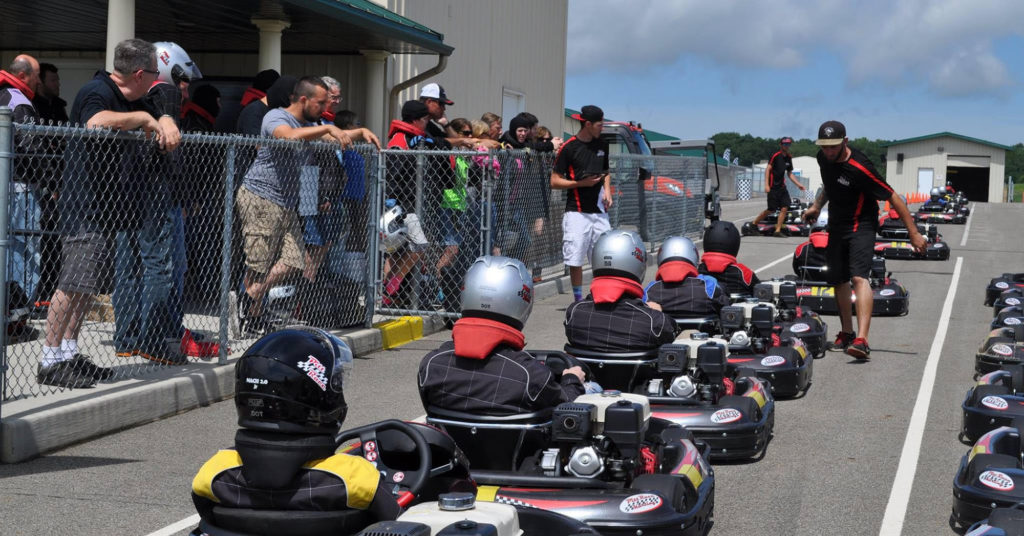
Go Karts at the Pittsburgh International Race Complex
Pittsburgh International Race Complex
201 Penndale Exd. Wampum, PA 16157 | 724-535-1000
This auto racing road course hosts amateur and professional automobile, motorcycle, and karting events, offering drivers of all levels a way to get on the track. The 400-acre complex, located in Wampum, offers spectator events, performance driving education, Test & Tune days, and a number of group experiences.
Jerry’s Curb Service
1521 Riverside Dr., Bridgewater, PA 15009 | 724-774-4727
Hop in the car and back into a spot at Jerry’s Curb Service in Bridgewater. Peruse the menu before flicking on your headlights to let your carhop know you’re ready to order from the diner-style menu–just like in the old days. The business was opened in 1947 by Jerry Reed after his tour of duty with the U.S. Air Force, and has held on tight to 1950s nostalgia—chrome and neon adorn the restaurant. It’s the perfect place to show off your favorite set of wheels—or admire someone else’s!
Military-style Jeep at Diamond Park. Photo Courtesy Butler County Tourism & Convention Bureau.
The Birthplace of the Jeep
Butler, PA 16001
Butler County, in the northern part of the Rivers of Steel National Heritage Area, is the birthplace of the always-off-road-ready Jeep! When the War Department requested proposals from domestic tractor and auto manufacturers to design a four-wheel drive, 40 horsepower, 1,300-pound reconnaissance car that could haul WWII soldiers and heavy artillery–to be ready in 49 days, only two companies responded. Butler’s American Bantam Car Company delivered the vehicle in 45 days and won the contract. A Bantam Jeep Exhibit is in the works to open sometime in 2021, but you can always visit the Jeep Marker at Diamond Park in downtown Butler in the meantime. You may want to time your trip for the next annual Bantam Jeep Festival, which celebrates Jeep history, culture, and off-roading. Diamond Park is on Main Street in downtown Butler across from the Butler County Courthouse, 124 W Diamond St., Butler, PA 16003. The Heinz History Center’s Great Hall showcases the oldest surviving Jeep, a BRC-40 Reconnaissance Car from 1941 nicknamed “Gramps,” which is on loan from the Smithsonian Institution.
Stay tuned for Part Two of our Automobiles and Roadways driving tour itineraries.

 Exploring the Rivers of Steel National Heritage Area – Automobiles and Roadways!
Exploring the Rivers of Steel National Heritage Area – Automobiles and Roadways!